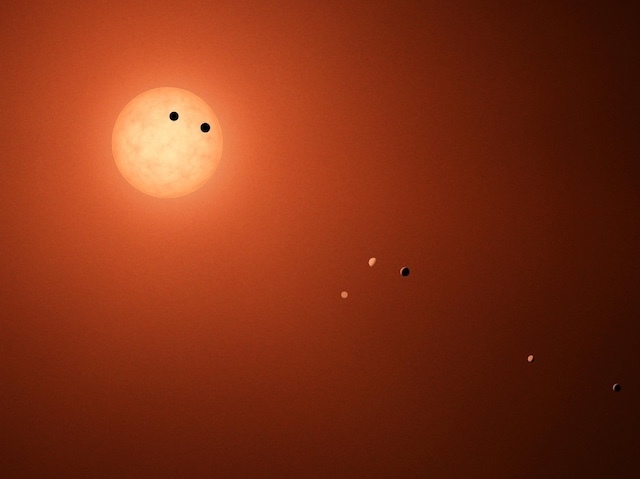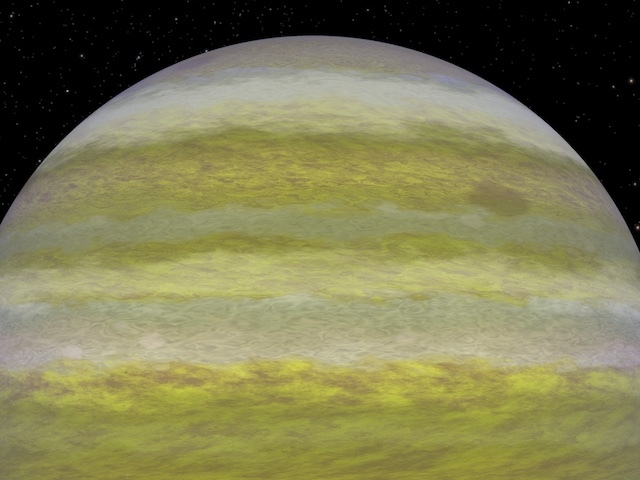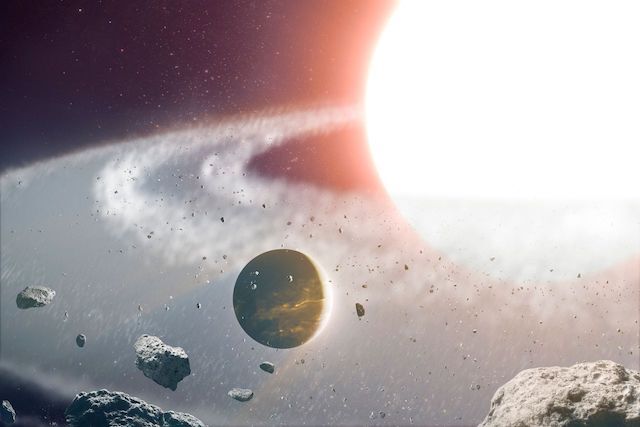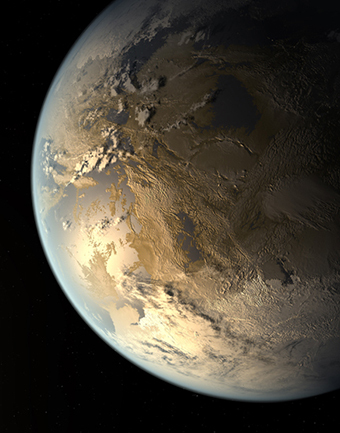News | December 21, 2021
What's Next for the Webb Telescope?
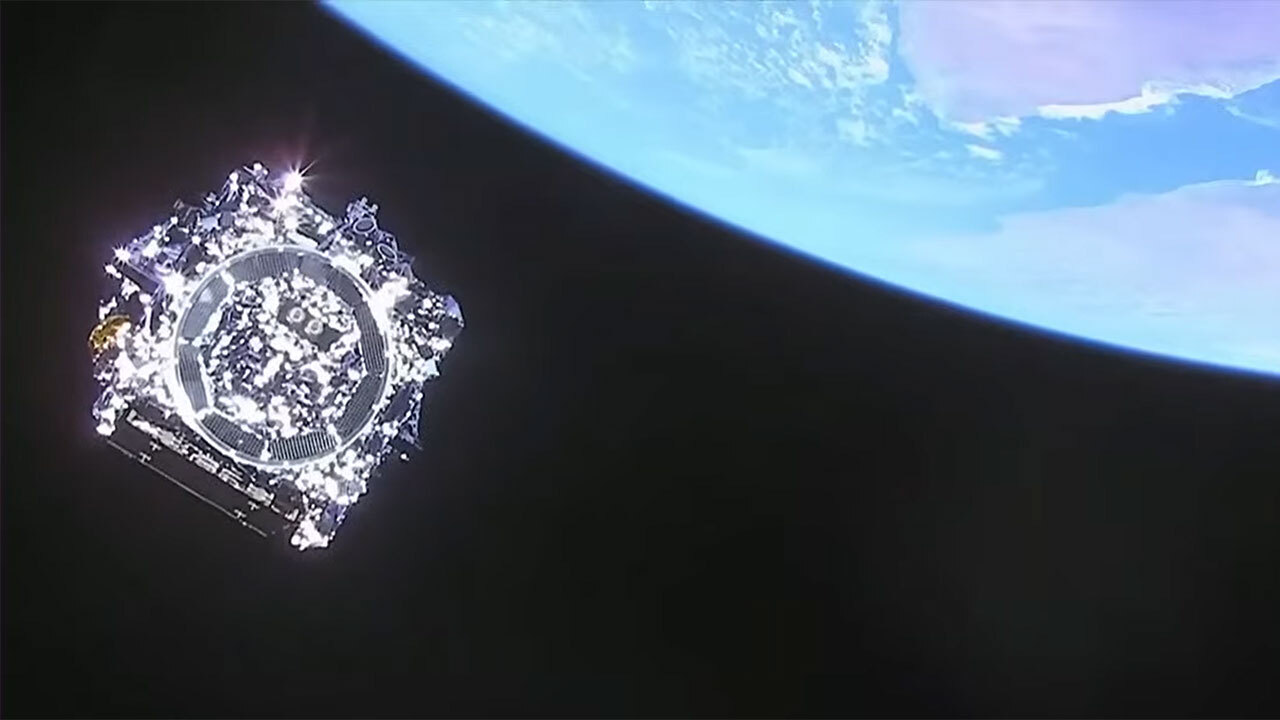
The James Webb Space Telescope is safely in space with its solar array drawing power from the Sun! Its reaction wheels will keep the spacecraft pointed in the right direction as it heads toward it destination in orbit around the Sun..
The James Webb Space Telescope is safely in space, powered on and communicating with ground controllers.
Webb continues in coast phase, and is now oriented correctly with respect to the Sun. The six reaction wheels of the spacecraft’s attitude control system have been powered on, and they are now responsible for keeping the spacecraft pointing in the right direction – so that its massive sunshield, which is the size of a tennis court and which will deploy over the course of the next week – will be able to keep the telescope protected from solar radiation and heat.
Webb is on its way to L2.
Follow all of Webb’s upcoming milestones here.
- How long will it take Webb to reach its destination? It will take the spacecraft about a month to travel about a million miles to Lagrange 2 (L2).
- What is L2? L2 is short-hand for the second Lagrange Point, a wonderful accident of gravity and orbital mechanics, and the perfect place to park the Webb telescope in space. There are five so-called "Lagrange Points" - areas where gravity from the Sun and Earth balance the orbital motion of a satellite. Putting a spacecraft at any of these points allows it to stay in a fixed position relative to the Earth and Sun with a minimum amount of energy needed for course correction.
The Webb mission, an international partnership with the European Space Agency (ESA) and Canadian Space Agency, will explore every phase of cosmic history – from within the solar system to the most distant observable galaxies in the early universe, and everything in between. Webb will reveal new and unexpected discoveries and help humanity understand the origins of the universe and our place in it.
A detailed breakdown of what lies ahead for Webb:
Webb’s 29 days on the edge begin upon liftoff. After 206 seconds of flight, at an altitude of about 75 miles above the atmosphere, the two halves of the rocket fairing that shields the observatory during ascent are separated by a pyrotechnic system with springs that expose the observatory to space. Ground teams expect to receive communication from Webb shortly after separation. Webb will then separate from the launch vehicle nearly 28 minutes after launch, and from this point on the ground team at the Space Telescope Science Institute in Baltimore will be in full control, to begin the most complex sequence of deployments ever attempted in a single space mission.
To unfold the history of the universe, we must first unfold this telescope. Following launch, over 300 single point failure items and 50 major deployments must work to ensure optimal science.
Webb’s first deployment, the extension of its solar array, will occur between 31 to 33 minutes after liftoff, stopping the drain on the observatory’s internal battery by supplying nearly 2 kilowatts of power to drive the spacecraft’s electrical systems and avionics. To enable the highest data rate communication to the ground through NASA’s Deep Space Network (DSN), the onboard medium and high-gain antenna platform is deployed at two hours.
At 12 and a half hours after launch, Webb will fire its thrusters, performing the first of several critical course corrections that send the observatory towards its final destination in orbit. The observatory will pass the Moon nearly two and a half days after launch, faster than the time it took Apollo astronauts to reach lunar orbit.
Webb’s first large deployment, the extension of its sunshield frame known as a unitized pallet structure, folds down nearly three days after launch, opening the observatory up to continue expanding. This represents the start of all major deployments and is scheduled to take approximately five hours for both front and back pallets to fold down completely.
Four days after launch, a deployable tower will extend to separate the telescope mirrors and instruments from the spacecraft bus. This separation effectively isolates the telescope from vibrations and conducted heat coming from the spacecraft bus. Additionally, this extension allows for the rest of Webb’s larger deployable components, like its sunshield and primary mirror, to have enough room to make their own sequence of complex movements afterwards.
Sunshield membrane deployments formally begin approximately five days after launch, as special covers that protect the sunshield during ascent will roll out of the way. Next, a critical juncture in the mission will occur when all of the 107 sunshield release mechanisms, or special pins that keep the five sunshield layers locked into place, need to fire on cue and pull themselves out to free the membranes. After all sunshield pins have been successfully removed, two wings, known as mid-booms, extend to pull each of the sunshield layers out into their characteristic diamond formation nearly a day later. Following full deployment, each of the five layers are tensioned and separated using special pulleys and motor systems. Sunshield deployments and tensioning are expected to conclude between eight to nine days after liftoff but can be slowed down to circumvent any unforeseen issues if they arise.
Following the conclusion of sunshield tensioning, a special radiator behind the primary mirror is deployed to help cool down the scientific instruments.
Next, Webb’s optics, and NASA’s new eye on the cosmos, open up. Telescope deployment begins by unfolding and latching into place the tripod holding the secondary mirror, and it is expected to conclude two hours into the 10th day after liftoff. The secondary mirror is one of the most important pieces of equipment on the telescope, essential to the success of the mission. This smaller circular mirror plays an important role in collecting light from Webb’s 18 primary mirrors into a focused beam. Primary mirror deployment is set to begin on the 12th day, with the mirror’s side panels, each holding three primary mirror segments, taking nearly three hours to extend out and latch into place. At 13 days in, Webb’s large-scale deployments are expected to conclude with the locking in of its primary mirror wings, revealing the telescope in all its glory.
A 10-day, multi-step process to move all 18 primary mirror segments out of their launch configuration will begin after the mirror wings are latched in and conclude on day 25. To begin fine-tuning the mirrors, 126 extremely precise actuators on the backside of the mirrors will position and subtly bend or flex each mirror into a specific prescription, a process that will take months.
On the 29th day, Webb will fire its thrusters once again to insert itself into its prescribed orbit at the second Lagrange point, or L2, nearly one million miles away from Earth, formally concluding the most difficult and complex deployment sequence ever attempted in space.


